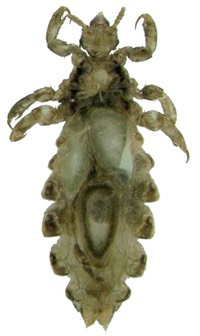Infestations of head lice may be treated with shampoos containing permethrin or pyrethrins specifically labeled for use on people. Some formulations also contain a synergist, a chemical that may enhance the activity of the insecticide. As with any insecticide or drug, read and follow the label directions. Because these products have limited ovicidal (egg-killing) activity, a second treatment is often necessary about 10 days later to target lice that hatch after the initial treatment. Susceptible lice do not fall from the hair or die immediately upon treatment with pyrethroids; one should wait until the next morning to determine the fate of treated lice. Pediculicides do not remove the eggs from the hair. Some physicians treat apparently resistant infestations with a prescription-strength pyrethroid (3 - 5%) preparation normally meant for treating scabies infestations. We reported that some head lice in the United States are resistant to permethrin, and that increased doses of this insecticide generally were not more effective. Thus, prescription-strength pyrethroids are not likely to be effective. Although permethrin and pyrethrins differ in chemical structure, their mode of action is quite similar. Hence, we would anticipate that pyrethrins would also be ineffective in killing permethrin-resistant lice.
Permethrin and pyrethrins remain reasonable treatments for newly-identified infestations. Despite increasing resistance by head lice against these ingredients, these formulations continue to be effective for some infestations. Such products are readily available and inexpensive, and pose insignificant risks to people. If live lice persist the day following such treatments, then one may consider that these lice may be resistant to this class of insecticides. Further treatment may be warranted with pediculicides containing other insecticides. Refer to the discussions on other pediculcides on this website for more information.

